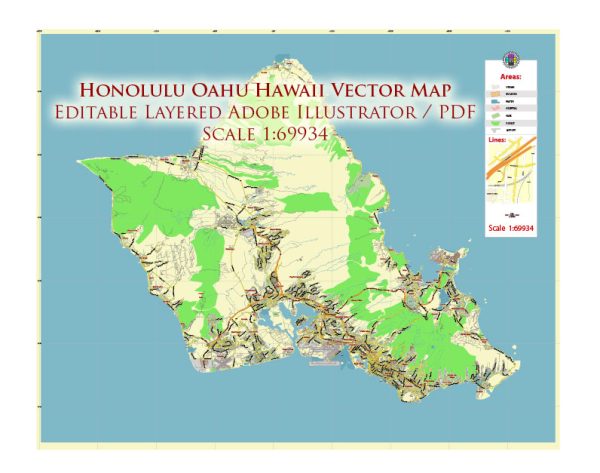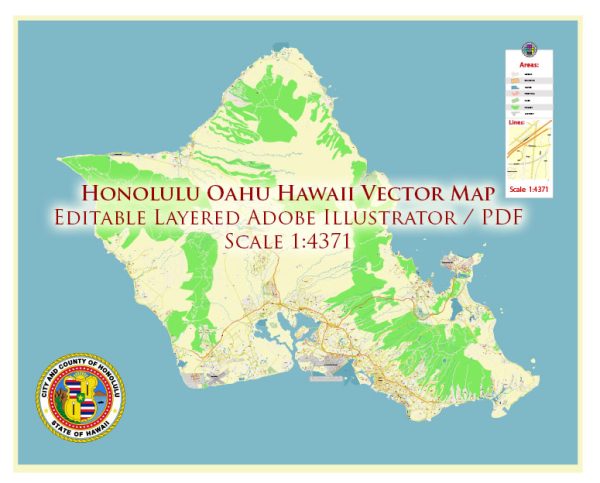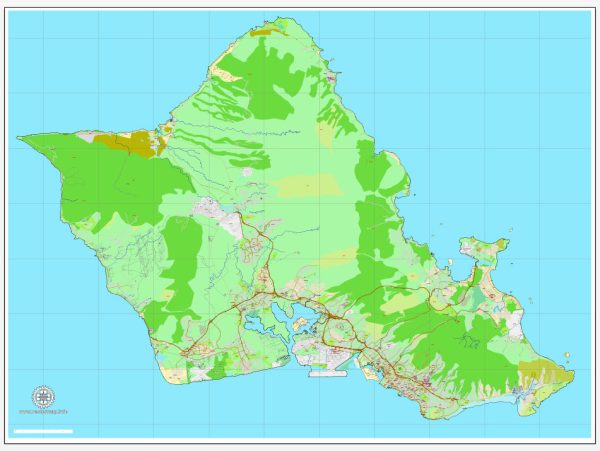Honolulu, located on the island of Oahu in the state of Hawaii, is not only the capital of Hawaii but also the largest city in the Hawaiian archipelago. Its history is a rich and diverse one, with influences from both native Hawaiian culture and various waves of immigration from around the world.
- Ancient Hawaiian Settlement: The history of Oahu and Honolulu begins with the arrival of Polynesian voyagers who settled in the Hawaiian Islands around 1,500 years ago. The native Hawaiians developed a complex society with its own culture, religion, and social structures.
- Unification of the Hawaiian Islands: In the late 18th century, King Kamehameha I, often known as Kamehameha the Great, unified the Hawaiian Islands and established his royal court on the island of Oahu, primarily in the Honolulu area. This event marked the beginning of Honolulu’s prominence as a political and economic center.
- Arrival of Western Explorers: European explorers and traders, such as Captain James Cook, began to visit Hawaii in the late 18th century, bringing new technologies and introducing diseases that had a devastating impact on the native population.
- Missionary Influence: Christian missionaries arrived in the early 19th century and played a significant role in shaping the culture and education of Hawaii. The arrival of missionaries marked the beginning of Westernization in Honolulu.
- Whaling Industry: In the 19th century, Honolulu became a major port for whaling ships, attracting sailors, traders, and merchants from around the world. The economic and cultural influences of these newcomers transformed the city.
- Overthrow of the Hawaiian Monarchy: In 1893, a group of American businessmen and sugar plantation owners, with the support of the U.S. government, overthrew the Hawaiian monarchy, leading to the eventual annexation of Hawaii by the United States in 1898.
- Growth as a U.S. Territory: Honolulu and the island of Oahu played a crucial role in World War II when the attack on Pearl Harbor occurred in 1941. The city and the island continued to grow and develop as a strategic military and transportation hub.
- Statehood: Hawaii became the 50th state of the United States in 1959, and Honolulu remained its capital. This marked the beginning of a period of growth and development as Hawaii embraced its role in the United States.
- Tourism and Modernization: In the latter half of the 20th century, Honolulu’s economy became increasingly reliant on tourism. Waikiki, a neighborhood in Honolulu, is a world-famous tourist destination, known for its beautiful beaches and hotels.
- Multicultural Society: Today, Honolulu is a vibrant, multicultural city with a diverse population influenced by Hawaiian, Asian, Pacific Islander, and mainland American cultures. It serves as the economic, political, and cultural center of the Hawaiian Islands.
Honolulu’s history is a complex interplay of native Hawaiian traditions, European and American influences, and the ongoing quest for identity and independence. It is a city with a unique blend of cultures and a deep connection to its natural surroundings, making it a captivating place to explore the history and culture of Hawaii.




 Author: Kirill Shrayber, Ph.D.
Author: Kirill Shrayber, Ph.D.